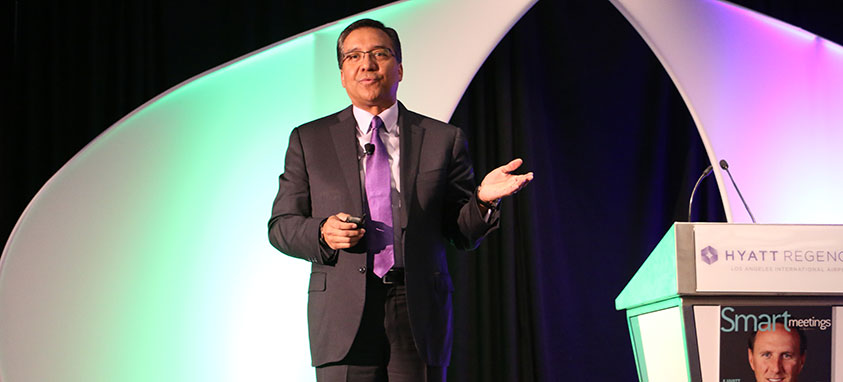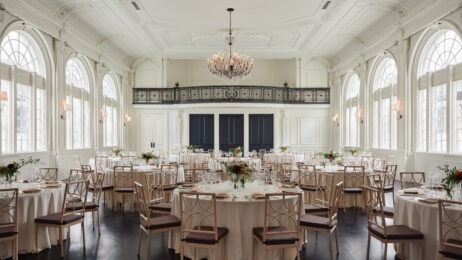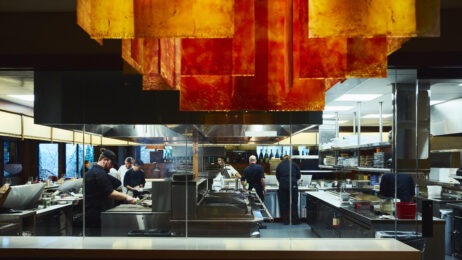With the prospect of meetings resuming again in the foreseeable future, Event Industry Council (EIC) is bringing together leading voices from the global planner and hotelier community to collect best practices and standards. The group, a revival of EIC’s Accepted Practices Exchange (APEX), has been dubbed the APEX COVID-19 Business Recovery Task Force.
It will launch in the coming week with co-chairs Michael Dominguez, president and CEO of Associated Luxury Hotels International, and Kristin Horstman, senior director of strategic events with Salesforce.
Door-to-Door Safety
“The goal is to provide a clearinghouse with all of the resources needed to show how we get back to business,” said Amy Calvert, CEO of EIC. The remainder of the task force will be named in time for a first meeting this week, and a position paper with an overview of the best information in the sector is promised shortly thereafter.
Calvert said updates will be rolled out as the situation changes, with a gap analysis of what still needs to be addressed. “What we will need in the next three to six months may be very different that what we will need years from now,” she said.
Dominguez endorsed the big-picture view the group has been tasked with collecting. “There are a lot of standards being set, but they are all over the board. The goal is to pull all of the information together for the [traveler’s] entire journey from the airport and ground transportation to the hotel and back.”
Hotels, Dominguez said, are just one piece of the safety equation, and they were waiting to see what the government would allow. Now that Centers for Disease Control and Prevention has come out with its guidance, hospitality companies are coming out with their plans. “It is not as simple as addressing front of house. We have to keep employees safe on the back side, and a lot of operational teams who would normally be addressing what is changing are on furlough,” he said.
Dominguez predicted a psychological shift in how hotels communicate all the cleaning they do. “In the past, we did cleaning late at night, so as not to take away from the experience, but at least in the beginning we will need to be very visible,” he said. He anticipated that a lot of properties would add UV sanitation to room sweeps and might switch to products designed for this particular virus. Medical-quality air-filtration systems in guest and meeting rooms could become the norm. “And we will have a lot more signage,” he said.
When it comes to testing people for fevers, Dominguez thinks thermal sensors at the airport might be more effective, because they would flag infected arrivees even before they get to ground transport and the hotel. “The question of whether guests will be required to wear a mask will be something that will have to be discussed by the property and the planner,” he said.
Already being discussed, Dominguez said, are contracts: “We are having a lot of good conversations around flexible attrition rates, cancellation fees and new force majeure clauses from now through the end of 2020.”
“We want to put everything in one place so there is no confusion, and it isn’t different from hotel to hotel or chain to chain. People need to know what they can expect. That will minimize confusion for the consumer and meeting professional,” he said.
Looking Ahead
Dominguez was also optimistic that many of these steps will be bridges to a more robust meeting environment. “I don’t know the timing, but a lot of this is temporary until we have a vaccine,” he said, citing recent comments by Dr. Anthony Fauci, director of the National Institute of Allergy and Infectious Diseases, that an effective treatment could be in place by January. “Then it goes back to the same risk we have always had,” Dominguez said.
“Everyone I have talked to, including veteran planners, are not worried about 2021,” he continued. “We are having discussions about meetings for the rest of the year and how to meet federal and state requirements. We are looking at investing in UV lighting for sanitation, but a lot of the cleaning standards are already in place. We may have to adjust chemical products, but we know what a 250-room classroom setup looks like with six feet between everyone for Phase Three (elevated risk) levels. Phase Two (moderate risk) is a little more vague.”
Task Force co-chair Horstman was confident about finding those answers together. “The events industry has always been about bringing people together to educate, celebrate and entertain. In our new abnormal, we need to focus on stabilization and recovery. The task force will guide our industry on how we will gather again in safe and healthy environments” she said.





